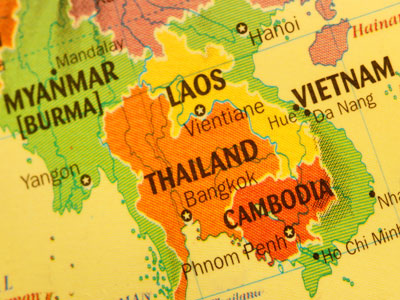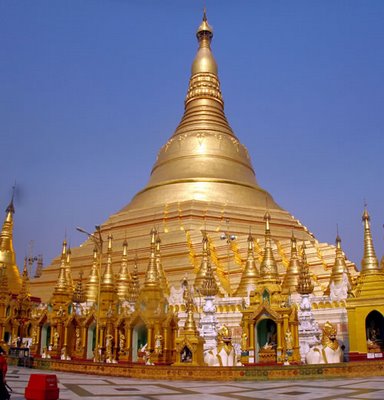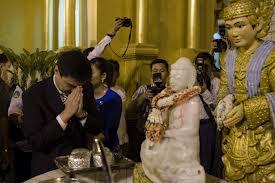
A temple, gleaming in gold, decorated in diamonds… What else can complement such grandeur? Yes, a spectacular work of Burmese temple architecture and the holiest Buddhist shrine, it is the Shwedagon Pagoda. The Shwedagon Zedi Daw Pagoda, also known as, the Great Dagon Pagoda and the Golden Pagoda in English is an impressive site. It is considered as a sacred Buddhist pagoda as it is home to the relics of the past four Buddhas, namely, the staff of Kakusandha, the water filter of Kogamana, the robe of Kassapa and the eight strands of hair of Gautama Buddha. Its history is an interesting one as it traces back the era of stupas. However, there are several myths and mysteries behind the construction of the pagoda. The gilded pagoda and its stupa dominate the skyline.
The Shwedagon Pagoda is located in Yangon (also known as ‘Rangoon’ during the British rule) which was the capital of Myanmar city, until 2006. It is the largest city and also the most important commercial centre. It lies between the geographic coordinates 16°47’ N latitude and 96°8’ E longitude. Yangon has the highest number of colonial buildings in the South East Asia and one such complex that dominates the skyline is the Sule Pagoda. It is strategically located at the centre of the town according to the grid system by the British for the development of the streets of the city.

The construction of the pagoda was carried out with utmost care and thoroughness. It was built by digging a hole on a hill near the dagon. A tomb was built and was covered with a golden plate. It was last rebuilt in the year 1774 when King Hsinbyushin rebuilt it with a height of 99 metres above the plate. The beautiful complex still stands the same today. Also all the other 68 stupas are gilded from top to bottom. About 8000 gold plates, 5000 diamonds and 2000 gemstones were used to decorate the main pagoda.

The story of Pagoda has two aspects: the one according to the legend and the one according to the historians. The legend says that the Pagoda was built about 2500 years ago by the Mon people somewhat between the 6th and the 10th centuries. However, few historians state that it was built by the Buddhist monks before Buddha had died. The story goes that the two merchant brothers, Taphussa and Bhallika met Buddha and received eight strands of Buddha’s hair to be enshrined in Burma. With the help of their king, King Okkalapa, they found the Singuttara Hill where the relics of the preceding Buddha had been enshrined. However, the king opened the box of the hair and many incredible things happened. Since then Buddha is worshipped at the pagoda.

The unique features are as follows:
-
The builders used about 8,688 sheets of gold to build the pagoda.
-
It has 5448 diamonds and 2317 rubies and other gems both inside and outside.
-
It has 1485 bells.
-
Pagoda was built before the Buddha died in 486 BCE. It contains relics of the past four Buddhas, namely the staff of Kakusandha, the water filter of Konagamana, a piece of the robe of Kassapa and the eight strands of hair of Gautama Buddha.
-
A pair of giant leogryphs called clinthe or mythical lions are seen at the entrances of the Pagoda.
-
The crown of the pagoda, also known as ‘hti’ is tipped with about 5448 diamonds and 2317 rubies.
-
The diamond blue bud at the very top is tipped with a 76 carat diamond making the complex more magnificent.
G Kowledge of | 0 Comments >>
0 Comments
Leave Comment
Your email address will not be published. Required fields are marked.